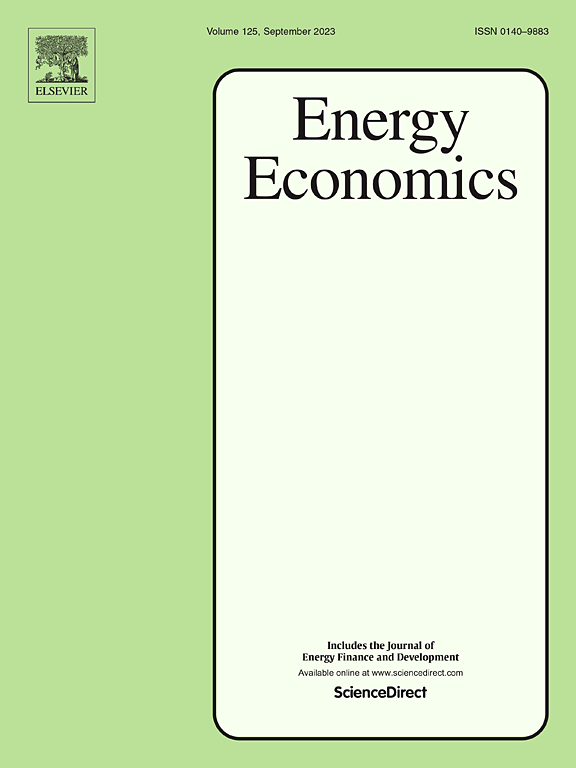考虑储备需求的负荷持续曲线模型中热容量的最优组合
IF 14.2
2区 经济学
Q1 ECONOMICS
引用次数: 0
摘要
在电力市场上,发电厂的一部分发电能力需要作为储备处于备用状态,以抵消因负荷和发电量的快速随机变化而产生的不平衡。在本文中,我们导出了最优的火力发电组合,使负荷持续时间曲线的联合成本和储备需求最小。我们表明,在需要时增加实时发电量的调节储备需要对峰值和基本负荷技术进行额外的容量投资。相比之下,用于减少实时发电量的下调准备金将混合电力转向峰值负荷能力。在模型中,我们计算了能源和储备的边际成本,并证明边际成本定价分散了计划者的零利润方案。本文章由计算机程序翻译,如有差异,请以英文原文为准。
The optimal mix of thermal capacity in a load duration curve model with reserve requirements
In electricity markets, a share of plants’ generation capacity needs to be on standby, as reserves, to cancel imbalances produced by quick and random variations of load and generation. In this paper, we derive the optimal thermal generation mix that minimizes the joint cost of a load duration curve and requirements of reserves. We show that regulation-up reserves, which increase real-time generation when needed, requires additional capacity investments of both peak and base-load technologies. In contrast, regulation-down reserves, which are used to decrease real-time generation, shift the mix towards the peak-load capacity. In the model, we calculate energy and reserves’ marginal costs and show that marginal cost pricing decentralizes the planner’s solution with zero profits.
求助全文
通过发布文献求助,成功后即可免费获取论文全文。
去求助
来源期刊

Energy Economics
ECONOMICS-
CiteScore
18.60
自引率
12.50%
发文量
524
期刊介绍:
Energy Economics is a field journal that focuses on energy economics and energy finance. It covers various themes including the exploitation, conversion, and use of energy, markets for energy commodities and derivatives, regulation and taxation, forecasting, environment and climate, international trade, development, and monetary policy. The journal welcomes contributions that utilize diverse methods such as experiments, surveys, econometrics, decomposition, simulation models, equilibrium models, optimization models, and analytical models. It publishes a combination of papers employing different methods to explore a wide range of topics. The journal's replication policy encourages the submission of replication studies, wherein researchers reproduce and extend the key results of original studies while explaining any differences. Energy Economics is indexed and abstracted in several databases including Environmental Abstracts, Fuel and Energy Abstracts, Social Sciences Citation Index, GEOBASE, Social & Behavioral Sciences, Journal of Economic Literature, INSPEC, and more.
 求助内容:
求助内容: 应助结果提醒方式:
应助结果提醒方式:


